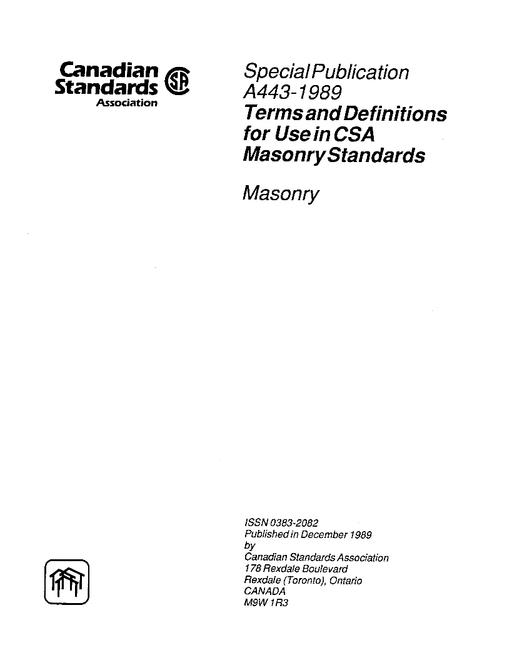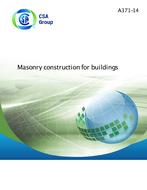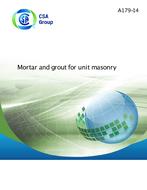-
-
Available Formats
- Availability
- Priced From ( in USD )
-
Available Formats
-
- Secure PDF 🔒
- Immediate download
- $107.00
- Add to Cart
-
- Printed Edition
- Ships in 1-2 business days
- $107.00
- Add to Cart
Customers Who Bought This Also Bought
-

CSA ANSI NGV 4.4:21
Priced From $199.00 -

CSA A443-1989 (R1998)
Priced From $37.00 -

CAN/CSA A371-14 (R2024)
Priced From $88.00 -

CAN/CSA A179-14 (R2024)
Priced From $90.00
About This Item
Full Description
This is the first edition of CSA A82, Fired masonry brick made from clay or shale. It replaces CAN/CSA-A82.1-M87, Burned Clay Brick (Solid Masonry Units Made from Clay or Shale); CSA CAN3-A82.2-78, Methods of Sampling and Testing Brick; and CSA CAN3-A82.8-M78, Hollow Clay Brick.
1 Scope
1.1 This Standard applies to brick made from fired clay or shale that are intended for use as structural and/or facing components in masonry. It includes testing and other requirements pertaining to freeze-thaw durability, finish, texture, colour, compressive strength, absorption, efflorescence, size, distortion, and out-of-square. Note: See Annex A for information on brick availability, durability of finish, and ordering. Annex B provides commentary on brick properties, durability, and use. For masonry of fired brick designed in accordance with CSA S304.1, see Clause B.8.3.
1.2 This Standard does not specify requirements for clay paving brick, thin brick, or glazed brick. Note: The durability requirements of this Standard may be used for shapes not satisfying the thickness requirements for brick.
1.3 This Standard specifies requirements for two grades of brick - EG (Exterior Grade) and IG (Interior Grade), and three types of brick - Type S, Type X, and Type A. Brick may be solid, cored, or hollow.
1.4 Although this Standard provides test methods for initial rate of absorption (Clause 15) and efflorescence (Clause 16), these characteristics are not used as qualifying conditions for determining compliance of brick with this Standard.
1.5 Testing of brick removed from in-situ masonry construction is not within the scope of this Standard.
1.6 In CSA Standards, "shall" is used to express a requirement, i.e., a provision that the user is obliged to satisfy in order to comply with the standard; "should" is used to express a recommendation or that which is advised but not required; "may" is used to express an option or that which is permissible within the limits of the standard; and "can" is used to express possibility or capability. Notes accompanying clauses do not include requirements or alternative requirements; the purpose of a note accompanying a clause is to separate from the text explanatory or informative material. Notes to tables and figures are considered part of the table or figure and may be written as requirements. Annexes are designated normative (mandatory) or informative (non-mandatory) to define their application.





